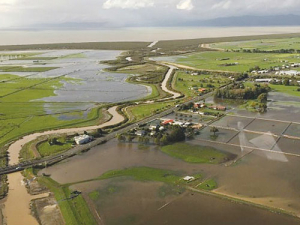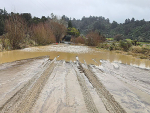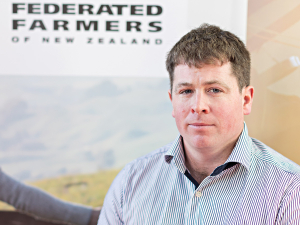It's been a wet year alright: MetService is already describing 2017 as “the year it didn’t stop raining” with Waikato rainfall at record levels for January to September.
That’s a legacy farmers are taking into spring as they prepare to fertilise paddocks in coming months as saturated soils start warming up.
Generally speaking, getting the best bang for buck out of fertiliser while protecting economic and environmental bottom lines is a key goal for farmers.
Finding the balance can be tricky for farmers and requires advice from qualified farm consultants and nutrient management advisors.
Various risks apply to applying fertiliser, so I recommend all farmers have a nutrient budget and a nutrient management plan for their properties and discuss their situation with their fertiliser rep. Our regional plan requires that every farm has such a budget and plan if nitrogen (N) use exceeds 60kg/ha/year.
Nutrient budgeting is widely accepted as the appropriate first step in managing nutrient use and it’s the preferred tool for evaluating the environmental impacts of farm management practices.
Overseer, a computer decision support model, is used to advise on nutrient management and greenhouse gas emissions. It predicts what happens to the nutrients brought onto a farm in the form of fertilisers and supplementary feed in the same way a financial budget can track money.
AgResearch recently released a new version of the Overseer nutrient budget model, downloadable from www.overseer.org.nz
An important issue to consider is nitrate leaching. Plants need N for healthy leaf growth, but N is a very mobile nutrient. If more nitrogenous fertiliser is applied than plants can take up, most of the unused nitrogen ends up leaching down into groundwater.
Sometimes N will also be lost to waterways as run-off and some is always released back into the air as gas.
The amount of N leaching from pastures can be reduced by:
- timing fertiliser application to avoid periods when plant uptake of N will be low, such as when soils are saturated, during heavy rain, colder periods and times of low soil temperatures
- applying N fertiliser in split dressings (as many split doses as possible)
- irrigating farm dairy effluent to a large enough area
- adjusting fertiliser policy for effluent irrigated areas to account for the nutrient value of effluent
- using fenced wetlands and well-managed open drains as nutrient traps.
The nutrient phosphorus (P) behaves very differently from N because it binds with the soil and only dissolves slowly in water over time.
This means it doesn’t readily leach to groundwater. But it can damage the health of waterways through soil erosion and surface run-off into water. Typically, 80% of P loss can sometimes come from about 20% of the farm area.
Farmers can reduce the amount of P run-off by keeping Olsen P to optimum agronomic levels. Other tips include:
- following the NZ Fertiliser Manufacturers’ Research Association Code of Practice for Nutrient Management
- applying fertiliser when grass is in an active growing phase
- leaving a grassed buffer strip between paddock and waterway (the strip filters the P before the run-off reaches the water)
- controlling run-off from tracks, races, feed and stand-off pads.
There is increasing pressure for farmers to improve their nutrient management because of the effects N and P can have on water, and because improving nutrient use efficiency is equally important for farm profits.
So a clear assessment of fertiliser requirements will both improve economic returns from pasture and help avoid contamination of ground and surface water with nutrients -- particularly N and P.
• Bala Tikkisetty is a sustainable agriculture advisor at Waikato Regional Council. Contact him on This email address is being protected from spambots. You need JavaScript enabled to view it. or 0800 800 401.


















